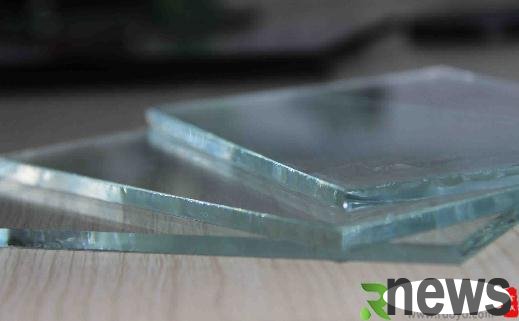Cleaning of float glass - The difference between float glass and ordinary glass The difference between float glass and ordinary glass Ordinary glass is emerald green, fragile, and has low transparency. It is prone to aging and deforming under rain a...

Cleaning of float glass - The difference between float glass and ordinary glass
The difference between float glass and ordinary glass
Ordinary glass is emerald green, fragile, and has low transparency. It is prone to aging and deforming under rain and sunlight. Try not to be used in making fish tanks. Floating glass, transparent float glass is made of glass paste entering the tin tank through the control gate. After floating on the molten tin surface due to the effect of gravity and its own surface tension, it enters the trough, making the two sides of the glass smooth and even, and the corrugation disappears. Dark green, smooth and ripples-free, good perspective and certain toughness. What is the difference between ordinary flat glass and float glass?
A: Both ordinary flat glass and float glass are flat glass. It's just that the production process and quality are different. Ordinary flat glass is made of quartz sandstone powder, silica sand, potassium fossils, soda ash, Glauber's salt and other raw materials, prepared in a certain proportion, melted at high temperature by melting kilns, and produced by vertical drawing method or flat drawing method or calendering method. Ordinary flat glass is divided into three categories according to its appearance quality: special selection, first-class product, and second-class product. According to the thickness, it is divided into five types: 2, 3, 4, 5 and 6mm.
B: Floating glass is prepared in a certain proportion of raw materials such as sea sand, quartz sandstone powder, soda ash, dolomite, etc., and melted at a high temperature through the melting kiln. The glass liquid flows continuously from the tank kiln to and floats on the metal liquid surface, spreads into a glass tape with uniform thickness, burnished and polished, cooled and hardened, and then cuts out of the metal liquid, and then cuts through annealing. The glass surface is particularly smooth, with very uniform thickness and very small optical distortion. Floating glass is divided into three categories according to its appearance quality: high-quality products, first-class products and qualified products. According to the thickness, it is divided into nine types: 3, 4, 5, 6, 8, 10, 12, 15, and 19mm.
C: The appearance quality level of ordinary flat glass is determined based on the defects such as ribs, bubbles, scratches, sand particles, bumps, and wire channels. The appearance quality level of float glass is judged based on the number of defects such as optical deformation, bubbles, inclusions, scratches, lines, fog spots, etc.
D: Ordinary glass, emerald green, fragile, low transparency, and prone to aging and deforming under rain and sunlight. Floating glass, transparent float glass is made of glass paste entering the tin tank through the control gate. After floating on the molten tin surface due to the effect of gravity and its own surface tension, it enters the trough, making the two sides of the glass smooth and even, and the corrugation disappears. Dark green, smooth and ripples-free, good perspective and certain toughness.
E: The production process of float glass is different from ordinary glass. Its advantages are that the surface is hard, smooth and flat. The color of float glass looks different from that of ordinary glass on the side. It turns white and the object does not distort after reflection, but the general deformation of water-shaped patterns. Cleaning and maintenance of float glass
Mold glass has always been a difficult problem in the industry. Glass mold (i.e., anti-alkali) undergoes chemical reactions, changing the properties of the glass surface. Under the sunlight, rainbows, mold spots, water-egg oil-egg paper patterns and other phenomena appear on the surface.
Mould glass mostly occurs during production and storage and transportation. After mold, the surface of the glass products will lose its luster and lose its transparency, appearing rainbows, white spots or patches (not easy to separate), etc., which seriously affects the quality of float glass products, resulting in a significant discount on the image of glass companies among downstream customers, and also affects the price of finished products. Especially in the current situation where the glass sales market continues to be sluggish, an important measure to allow enterprises to continue to maintain strong competition is to further improve the quality of glass, minimize the scrap rate caused by mold in glass and reduce production costs.
Therefore, it is particularly important to choose a good anti-mold product. At present, glass mold protection mainly includes three major categories: anti-mold powder and mildew, paper insulation and mildew, and anti-mold liquid and mildew. Among these three types of products, mildew-proof powder is the best, and is a nano-grade polymer material, with environmental protection, high efficiency and easy to clean. Among them, imported anti-mold powder has attracted much attention from glass companies for its high-quality materials and strict production requirements, but its high price has made glass companies afraid, and the serious increase in costs is no longer suitable for the current demand for companies to promote cost savings.
In recent years, the rise of domestic anti-mold powder is making up for this shortcoming. The price only accounts for 1/3 of imported powder. In terms of quality, some company products have reached or even higher than the international level, which is fully in line with the production needs of domestic glass companies. As the added value of glass products becomes higher and higher, the use of anti-mold products is also being paid more and more attention.